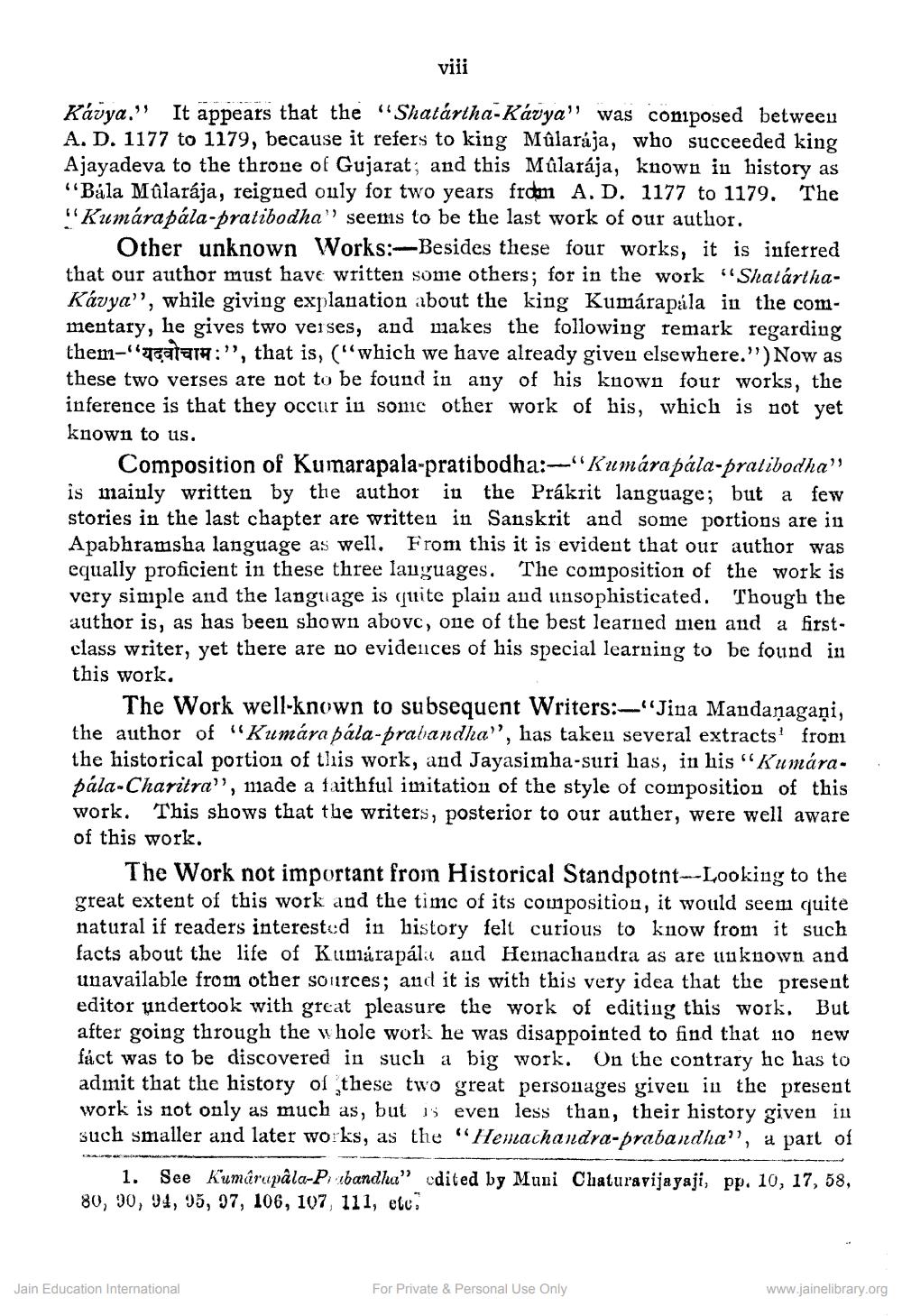________________
viii
Kavya." It appears that the "Shatártha-Kavya" was composed between A. D. 1177 to 1179, because it refers to king Mûlarája, who succeeded king Ajayadeva to the throne of Gujarat; and this Mûlarája, known in history as "Bala Mûlarája, reigned only for two years from A. D. 1177 to 1179. The "Kumarapala-pratibodha" seems to be the last work of our author.
Other unknown Works:-Besides these four works, it is inferred that our author must have written some others; for in the work "ShatarthaKavya', while giving explanation about the king Kumárapála in the commentary, he gives two verses, and makes the following remark regarding them ":", that is, ("which we have already given elsewhere.") Now as these two verses are not to be found in any of his known four works, the inference is that they occur in some other work of his, which is not yet known to us.
Composition of Kumarapala-pratibodha:-"Kumára pála-pratibodha" is mainly written by the author in the Prákrit language; but a few stories in the last chapter are written in Sanskrit and some portions are in Apabhramsha language as well. From this it is evident that our author was equally proficient in these three languages. The composition of the work is very simple and the language is quite plain and unsophisticated. Though the author is, as has been shown above, one of the best learned men and a firstclass writer, yet there are no evidences of his special learning to be found in this work.
The Work well-known to subsequent Writers: "Jina Mandanagani, the author of "Kumára pála-prabandha", has taken several extracts from the historical portion of this work, and Jayasimha-suri has, in his "Kumarapála-Charitra", made a faithful imitation of the style of composition of this work. This shows that the writers, posterior to our auther, were well aware of this work.
The Work not important from Historical Standpotnt-Looking to the great extent of this work and the time of its composition, it would seem quite natural if readers interested in history felt curious to know from it such facts about the life of Kumarapála and Hemachandra as are unknown and unavailable from other sources; and it is with this very idea that the present editor undertook with great pleasure the work of editing this work. But after going through the whole work he was disappointed to find that no new fact was to be discovered in such a big work. On the contrary he has to admit that the history of these two great personages given in the present work is not only as much as, but is even less than, their history given in such smaller and later works, as the "Hemachandra-prabandha", a part of
1. See Kumarapala-P bandha" edited by Muni Chaturavijayaji, pp. 10, 17, 58, 80, 90, 94, 95, 97, 106, 107, 111, etc
Jain Education International
For Private & Personal Use Only
www.jainelibrary.org




